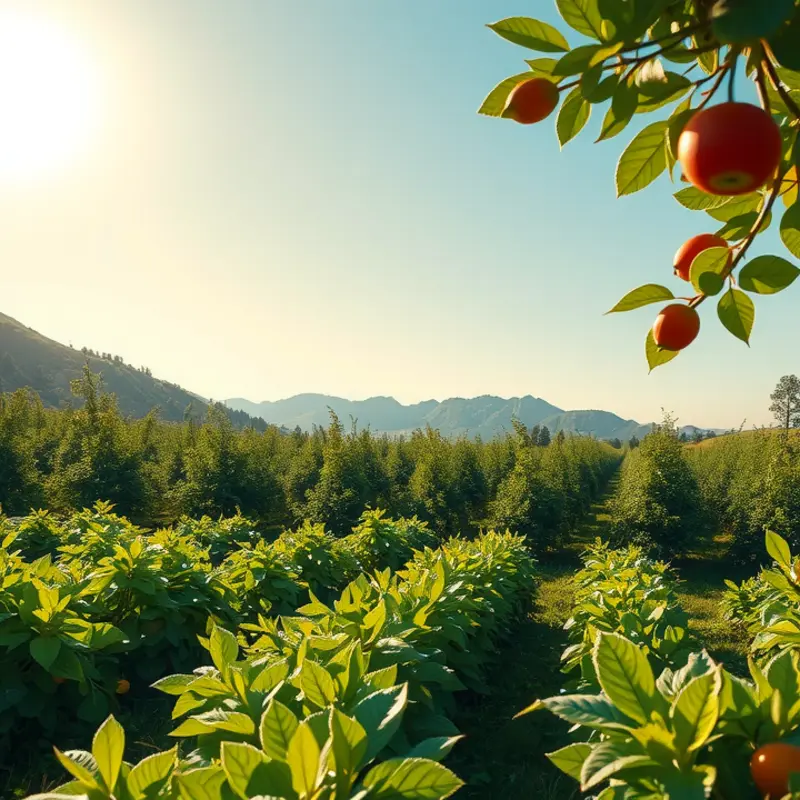Making eco-conscious food choices is essential in the quest for a sustainable future. By adopting earth-friendly eating solutions, individuals can significantly reduce their environmental impact. This exploration into sustainable dietary habits will equip you with practical tools to make mindful decisions, whether by sourcing local foods, reducing waste, or embracing plant-based diets. Join this journey towards a healthier planet and discover how each meal can contribute positively to our ecosystem.
Sourcing Local and Seasonal Produce

Opting for local and seasonal produce is a keystone in sustainable eating. Buying locally grown fruits and vegetables reduces the carbon footprint associated with transporting products over long distances. By choosing local, you’re not only getting fresher ingredients due to the shorter time between harvest and consumption, but also supporting local farming communities and bolstering regional economies.
Understanding seasonality in produce can empower consumers to make more eco-friendly choices. When crops are in season, they are usually more abundant and require fewer artificial interventions like greenhouses or excessive irrigation. This naturally leads to lower prices and better quality, benefiting both your wallet and your taste buds.
To effectively incorporate seasonal and local produce into your diet, you first need to familiarize yourself with what’s in season. Agricultural calendars, easily accessible online, can be a great resource. Many farmer’s markets sell only seasonal produce, making them an excellent place to start your exploration. These markets not only offer seasonal goods, but they also often provide information directly from farmers about how the food is grown and harvested.
Incorporating seasonal produce into your meals can be as simple as swapping out an out-of-season vegetable for one that’s in its prime. Instead of using tomatoes in mid-winter, for instance, consider hearty winter squash, which offers a robust flavor while in season. You can also plan meals around peak harvest times. In spring, fresh asparagus can be used in salads, while fall offers a perfect opportunity for roasted root vegetables.
Meal planning around these ingredients doesn’t have to be complex. You might find practical tips in resources focused on minimal prep dinner ideas, merging convenience with sustainability. Consider batch cooking with seasonal ingredients to make weeknight dinners quicker and easier, reducing the temptation to rely on quick, less sustainable options.
Additionally, understanding flavor profiles can help make the most of seasonal fruits and vegetables. As they are harvested at their peak, they possess richer flavors, requiring fewer spices and added flavors to create an impressive dish. For those with limited access to fresh markets, investigating whether local supermarkets label their produce with origin and seasonality information can be beneficial. Many communities are also supported by programs that connect consumers to nearby farms, such as through Community Supported Agriculture (CSA).
Embracing local and seasonal produce is a delightful way to contribute to a sustainable and eco-conscious lifestyle. It offers not only environmental benefits but also enhances your culinary experience by connecting you to nature’s natural cycle. As we continue exploring earth-friendly eating solutions, local and seasonal sourcing stands out as a fundamental practice with wide-reaching impacts.
Adopting Plant-Based Meals

Adopting a plant-based diet can serve as a powerful tool in mitigating the environmental impact of our food choices. Reducing meat consumption significantly decreases greenhouse gas emissions, as livestock farming contributes to deforestation and the release of methane—a potent greenhouse gas. Moreover, shifting towards plants helps conserve vast amounts of water. For instance, producing one pound of beef requires approximately 1,800 gallons of water, while the same amount of tofu needs only 300 gallons.
Land use is another significant factor. Agriculture dedicated to raising animals requires far more land compared to growing crops for direct human consumption. By opting for a plant-based meal plan, you help reduce the demand for land conversion and preserve natural habitats.
Making the transition to more plant-based meals doesn’t mean sacrificing flavor or satisfaction. Start by integrating more vegetables, legumes, and whole grains into your meals. Simple swaps, like using lentils in place of beef for tacos, can lead to delightful discoveries. Explore global cuisines that emphasize plant-centric dishes, such as Indian dal or Mediterranean grain bowls.
For practical inspiration, consider browsing resources like this guide on easy plant-based eating. These guides offer diverse recipes that help you explore new tastes and techniques, making the transition enjoyable.
Begin gradually by dedicating certain days to plant-based meals. ‘Meatless Mondays’ can serve as a starting point. Focus on meals that are naturally plant-based, which won’t make you feel deprived, such as a hearty chickpea stew or a vibrant vegetable stir-fry. Over time, you can expand the number of days or include more meals within a day.
As you explore various plant-based recipes, take note of your favorite flavor profiles and ingredients. This helps create a repertoire of go-to meals, making meal planning easier and more enjoyable. Opting for seasonal produce enhances both the flavor and nutritional value of your meals while also reducing your carbon footprint by minimizing transportation resources.
Include protein-rich plant foods like beans, peas, and quinoa to ensure a balanced diet. These ingredients are versatile and can be used in countless dishes. Remember, it’s not about perfection but progress. Every plant-based meal contributes positively to the planet.
With these manageable steps, adopting plant-based meals turns into a sustainable journey, offering both environmental and personal health benefits. Whether it’s experimenting with a new recipe or embracing a well-loved dish, each meal represents a step towards a more earth-friendly diet.
Final words
Embracing earth-friendly eating solutions involves mindful choices that extend beyond the plate. By sourcing local and seasonal produce and incorporating more plant-based meals into your diet, you contribute to a healthier environment and promote sustainable practices. Each small adjustment not only benefits your health but also supports local economies and reduces environmental degradation. As you embark on this journey of conscious eating, remember that every meal is an opportunity to impact the planet positively. Let’s stand together for a greener future, one bite at a time.








